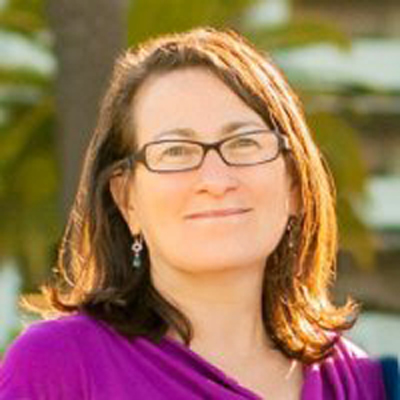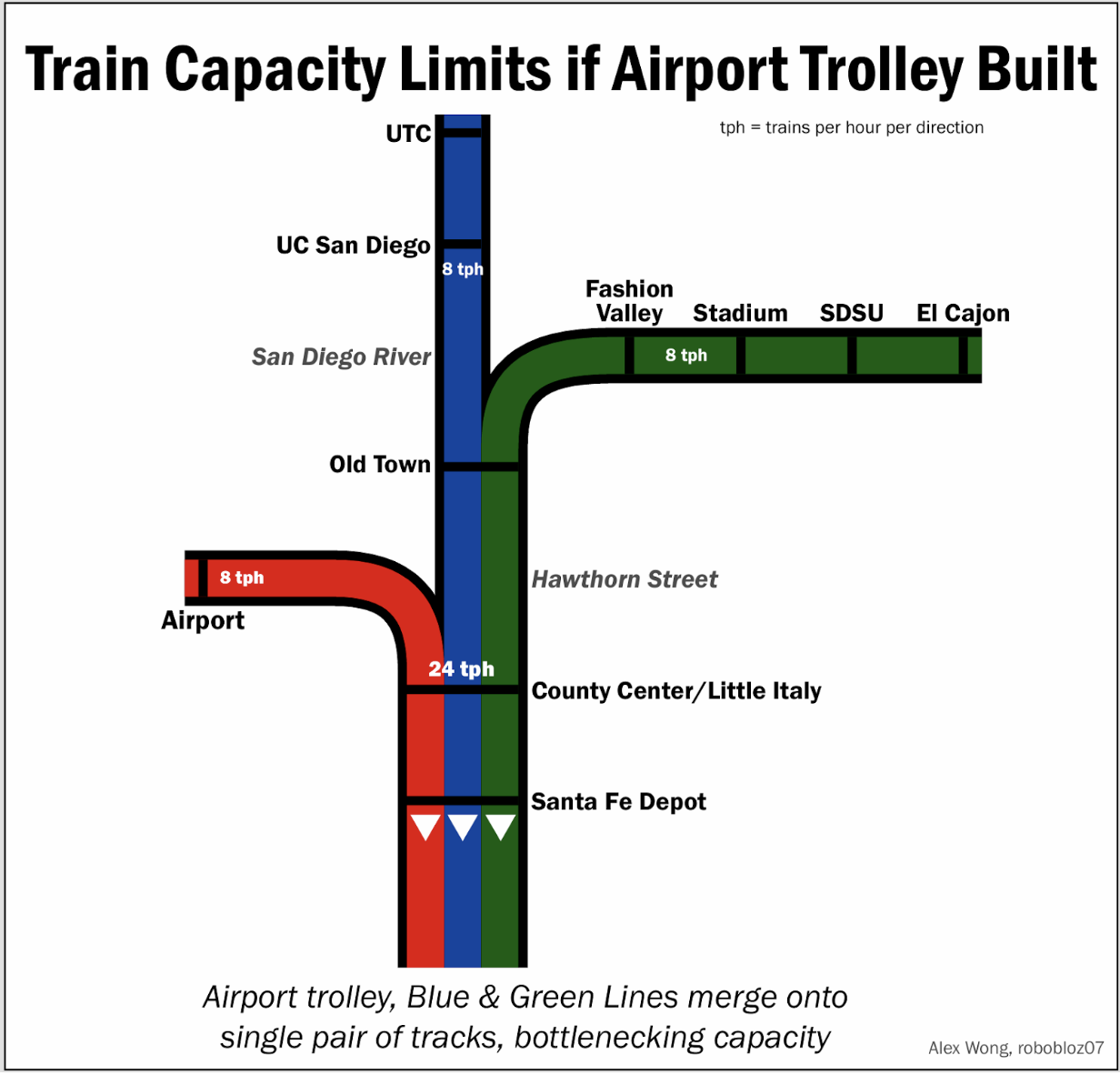Ellen Greenberg recently took the job of Sustainability Director for Caltrans, and last week Streetsblog sat down to talk to her about it. Streetsblog had interviewed her predecessor, Steven Cliff, when he was hired in the newly created position a few years ago. Cliff had joined the department when it was at the beginning of a cultural change away from being simply “the highway department,” and he oversaw the drafting of sustainability goals within its new Strategic Management Plan.
When Cliff departed, he left a gap in the management team that has now been filled by Greenberg. As she describes it, her task is to work across all the different programs within Caltrans to guide and offer resources for meeting the department's sustainability goals. Those include internal and external goals—that is, the department itself, as a 20,000-employee organization, has a responsibility to follow sustainable practices including energy and water conservation, and it also has a duty to build and maintain the state's transportation system in a way that does not waste resources or encourage excess driving.
Greenberg has spent the first few months of her job feeling out its parameters and getting to know the people who have been working on these issues already, both within Caltrans and in other state agencies. It seemed like a good time to check in and see what she sees as her priorities, and what we can expect from her (slowly) growing team.
On the active transportation front, she says “There are little pieces of progress. To some people, that's depressing because they are so little, but to others it's encouraging—because it is still something.”
She gave the example of Rachel Carpenter, who was hired last year as Caltrans' Chief of Pedestrian and Bicycle Safety. “Rachel is in traffic operations,” said Greenberg, “Which is where she should be. It's a sign that we are treating bike and ped safety as any other safety issue, which is really positive. It's not a separate group 'down the hall'; it's in traffic ops, which is where it belongs.”
Another example of positive change is that all twelve Caltrans districts have or are currently recruiting a sustainability leader or coordinator. “The different districts are at different levels,” she said, “but they are doing a lot of work.”
Greenberg has been holding monthly videoconferences with the districts, and is encouraged by the range of work going on there. District 8, for example—Riverside and San Bernardino counties—just completed a bike project on State Route 62, in Joshua Tree, “where they adjusted a particularly wide bit of right of way, and put in bike lanes and angled parking—they just had the ribbon cutting,” said Greenberg.
Another district is involved in a pilot program to choose construction contractors that use energy efficient and low emission equipment on jobs for Caltrans. District 5 staff is working with the Monterey Air Quality Management District to build electric charging stations at one of the roadside rest stations in Monterey County. “So the range is just huge,” she said. “I have found those meetings really encouraging.”
But that also contributes to a bit of randomness. “The particular projects are determined by who's running them,” she said. “We're doing a lot of stuff, and we want that stuff to move from random–random might be too negative a word. We want it to become systematic,” she said.
Greenberg also talked about the statewide Bicycle and Pedestrian Plan that was recently adopted, and about how that will translate to the local level.
“The statewide plan, as you're probably aware, did not have projects in it—which I'm sure was a frustration for some people,” she said. “But the idea is that all of the districts will be adopting area plans that will contain a list of projects,” which, she pointed out, will be on the state highway system where Caltrans has jurisdiction.
“Caltrans headquarters will be supporting that process, which will be happening in all the districts,” she said. “We are going to develop some basic templates, so there will be some consistency. We're still in process.”
In fact, it hasn't yet been decided exactly what those plans will entail. “Is it a bike and ped plan? Is it a complete streets plan? Those things aren't exactly the same,” said Greenberg. “Also, the statewide plan addresses education, data collection, and enforcement. Are the local plans going to do the same, at a local level? Or are they going to be much more about context? Not everything has been decided.”
But Greenberg's job encompasses a lot more than promoting active transportation. She oversees sustainability practices throughout Caltrans, including internal business practices like energy saving and using recycled materials as well as supporting health and safety in transportation, efforts to reduce driving, and deploying zero emission vehicles.
Her top priority, she says, is “to embed the sustainability objectives into the department.” That means in its practices, in its training, and in its program development.
In terms of specific areas, she said, her priorities lie in those that are not traditionally part of Caltrans' core mission. “I think we are doing better in areas that are familiar,” she said. “There are engineers who are very committed, for example, to resource efficiency and operational efficiency—that's just part of their engineering values. So I think we're better on that stuff than we are on, say, supporting walkable communities and active transportation generally.”
“So the areas we need to get much better on include the overall commitment to active transportation—to make it part of our ongoing work.”
Other priorities including organizing and understanding Caltrans' role in VMT reduction and GHG emission reductions, and working with other stakeholders on those issues.
“I'm very concerned about [climate] adaptation,” said Greenberg, “including of Caltrans facilities. We have a number of activities assessing the vulnerabilities of the state highway system--that area is very very important.” Caltrans' response to the most recent storm season, she said, highlighted the department's strengths.
“And then I think we need to have a stronger connection to the whole set of people who are working on responding to climate change, in the whole sector,” she said. “So that's another priority of mine.”
In addition, she said, “It's not necessarily a sustainability issue, but I am very concerned about the need for the transportation system in the state to find a set of appropriate responses to emerging technologies, including mobility services as well as vehicle and fuel changes. To me that's really critical.”
“So that's a lot of priorities,” she said. “And I'm jumping on a moving train; we're already doing work in all these areas, but there is not yet a coordinated, fully consistent, fully embedded sustainability effort.”
“It's being smart about priorities, and making the right technical choices about what to do,” she said. “And then making these things a habit– a way of life in the department, rather than, for example, noting a good job done over here, a good example over there. It's about really embedding it.”
One of Greenberg's first priorities is to hire a team, beginning with a Sustainability Programs Manager at the Sacramento headquarters. She regrets that hiring at Caltrans is a slow process; she had requested funding for more staff in the current state budget, but it was not included this year, so she will be trying again in the 2018-19 budget year.
In the meantime, she's been “borrowing” employees from other divisions, a practice which, as she says, has both drawbacks and benefits. “This way they work in sustainability for a while, and then they will go back and work on their programs, bringing the experience with them,” she said, and benefiting the entire effort. She has also benefited from learning from colleagues who have years of experience in fields as diverse as equipment management—working on zero emission vehicles—and engineering services, where they study recycled paving materials.
Caltrans is “a very complex environment,” she said, “So that's been really helpful to me.”
“The downside [of borrowing employees] is that we have 'churn' within the sustainability group,” she said. Her ultimate plan is to add staff at headquarters who will focus on policy development, training, and working with stakeholders, and increase local staff in the twelve districts.






